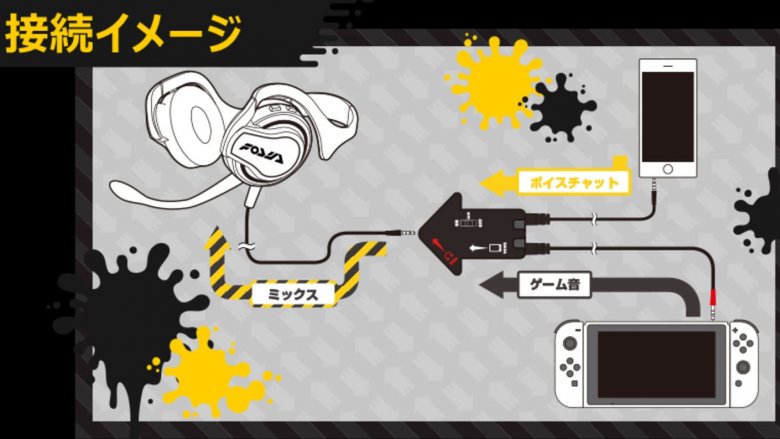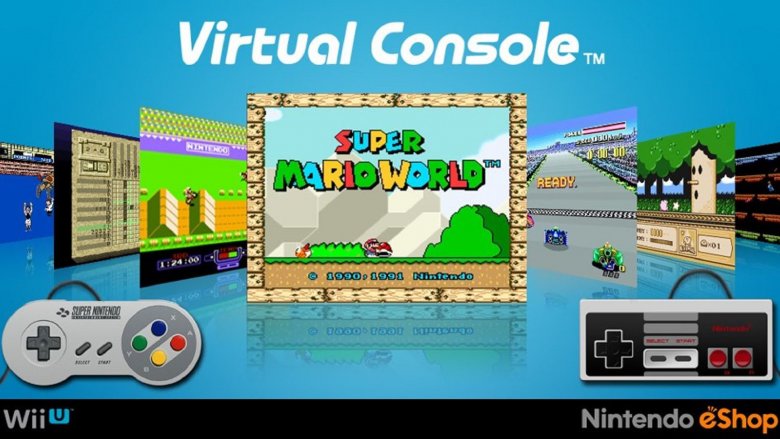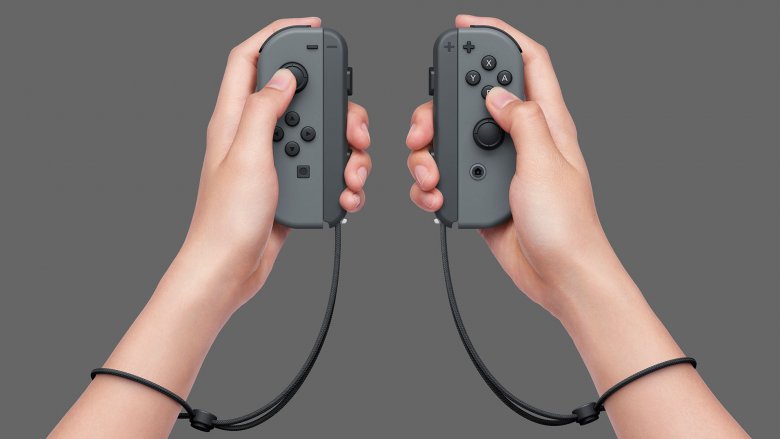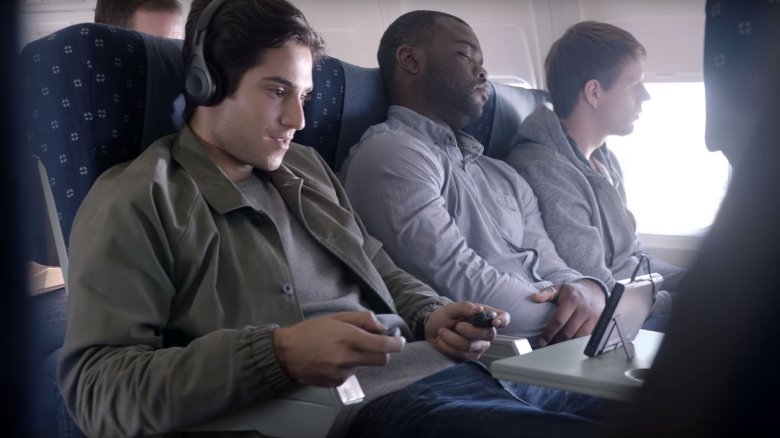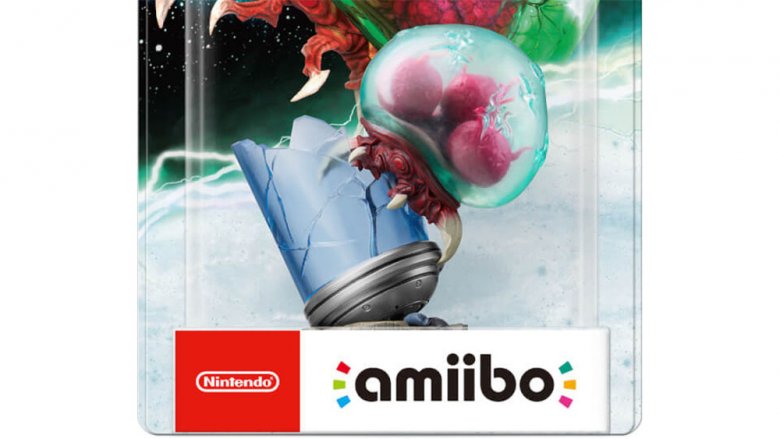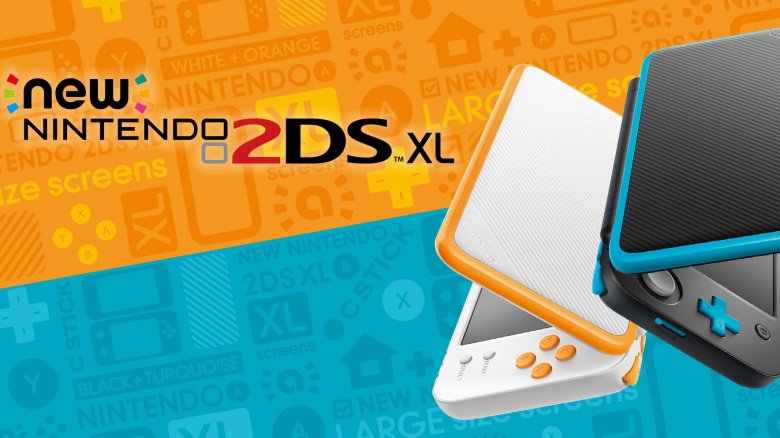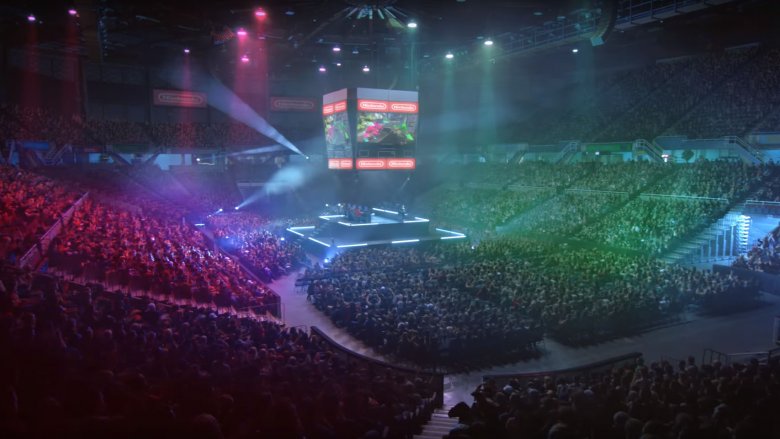Things Nintendo Is Still Doing Wrong
2017 has been a very, very good year for Nintendo. The company's latest console, the Switch, is a hit among both critics and consumers, with two of its titles—The Legend of Zelda: Breath of the Wild and Super Mario Odyssey—emerging as legitimate Game of the Year contenders. It's breaking sales records, even as stores struggle to keep the console in stock. Third parties, which traditionally struggle on Nintendo hardware, are starting to show interest in the Switch, and its third major release, ARMS, is a brand new intellectual property, not a nostalgia-laced retread. The relatively new Splatoon franchise is tearing it up on the sales charts. Last summer, Nintendo posted a 24.5 billion yen loss. This year, it made a 21.26 billion yen profit.
In other words, it looks like Nintendo finally figured some things out—so why is it still making simple mistakes? From products that are still too hard to find to baffling decisions regarding online networks and esports, Nintendo still lags behind the rest of the modern gaming community in a few notable ways.
We love you, Nintendo, and we want you to succeed. We just don't understand why you make that so darn hard.
Not enough product
You're excited to play the Switch. You can't wait to scratch your retro gaming itch with the NES Classic. That Super NES Classic, along with the brand new Super Nintendo game Star Fox 2, is looking mighty fine.
Except no matter how hard you look, you can't find them—anywhere—and you're not alone. While Nintendo is, once again, the hottest gaming company on the planet, the folks over in Kyoto still haven't figured out that they need to make products in order to sell products. That's led to shortages of Nintendo's most in-demand devices, which are leaving diehard fans out in the cold—unless they're willing to fork over hundreds of extra dollars to scalpers on eBay.
Now, to be fair, Nintendo got burned by the Wii U's low sales, grossly underestimated the Switch's popularity as a result, and bumped up production as quickly as possible. Nintendo also didn't realize that the NES Classic would have a wide appeal. Nintendo of America president Reggie Fils-Aime says that the intended audience for the retro console was "adults, 30-40 years old, who grew up playing NES as a kid, 10 years old or so but had stepped away from the gaming category," and produced units accordingly.
But even so, there's no excuse for the Super NES Classic pre-order debacle. Nintendo knew it had a hot item on its hands and vowed to make enough units to sate demand, and yet, pre-order units still sold out in mere minutes. Nintendo is a smart company, and executives must know they're leaving money on the table. Supply shortages don't help anyone, and Nintendo needs to get its act together. Sure, the games are great—but who cares if we can't play them?
The Switch's online service is a joke
Nintendo doesn't do things like other companies. While Microsoft and Sony have offered robust online services for the Xbox and PlayStation consoles for over a decade, the recently released Switch marks Nintendo's first real foray into modern multiplayer gaming. At long last, the company promised, a Nintendo system would support voice chat. Finally, you'd be able to invite friends to participate in multiplayer matches, and manage a friends list without inputting nonsensical and laborious Friend Codes.
And then the network actually launched. While you certainly can use voice chat in Splatoon 2, it's not easy. Instead of supporting chat directly through the console, Switch owners need to download an app on their smartphones. Phones need to stay on and Nintendo's app needs to be in the foreground to make chat work, too. Swipe over to a web browser, or set the phone's screen to go to sleep after a few minutes of inactivity? Sorry, that conversation is over. Oh, and if you want to use a headset? Short story: it's a nightmare.
It's a baffling and weird design, although given Nintendo's spotty history with voice chat, it's not entirely unexpected. Still, Nintendo expects users to eventually pay $20 a year for the service. Voice chat is a problem that other companies solved years ago. Nintendo, what's the hold up?
Where is the Virtual Console?
One of the coolest things about the Nintendo Wii—and the Wii U, and the 3DS—was the Virtual Console. For a few bucks, players could download games that originally appeared on Nintendo's 8-bit, 16-bit, and 64-bit platforms. It was a great way to revisit old classics, discover previously hidden gems, and flesh out the systems' libraries. It didn't really matter if a Nintendo system had a slow month, release-wise. With so many old titles available, Nintendo owners always had something to play.
Until the Switch, that is. Nintendo admits that fans want the download service on the Switch—"Our fans, our players, want access to all of our digital content, we know that," Fils-Aime says—but hasn't announced any plans to implement it. They may never. During a shareholder meeting, Nintendo senior executive officer Satoshi Yamato implied that Nintendo considers the mini NES and Super NES Classic consoles "a type of Virtual Console." Meanwhile, the Switch's premium online service will allegedly include access to different retro titles every month.
That's not good enough. Not only are the Classic consoles impossible to get your hands on, but their libraries are fixed (unless you void the warranty and hack them). The online service's retro offerings won't arrive until 2018, and nobody's quite sure what form that's going to take anyway. Maybe we're just spoiled, but after 11 years, we've gotten awfully used to having the Virtual Console around. At this point, taking it away is just cruel.
Easy to fix design flaws
Nintendo makes a handsome piece of hardware—at least, when everything works correctly. That isn't always the case. The 3DS' hinges crack after repeated use. The NES Classic's controller cords are inconveniently short. The Switch's docking bay warps the console if it stays inside too long, while the system's left Joy-Con controller loses its connection if it gets too far from the base, or if it's near another wireless device or a fish tank (Nintendo's solution to the latter problem? Stuffing a piece of foam inside the controller).
One one hand, none of these problems are as bad as the infamous Red Ring of Death. They're not fatal. On the other, they're simple issues. Given how obvious some of them are (the controller cords) or how ubiquitous others seem to be (the Joy-Con issues), we can't figure out why they didn't get flagged during product testing, and why they weren't fixed before the devices hit stores. If you have an answer, be sure to let us know—we're just as baffled as anyone else.
The Switch's battery doesn't last very long
True to Nintendo's promises, the Switch transforms seamlessly from a home console into a gaming device that you can take with you on the go. However, it only excels at one of those two things. Oh, sure, the Switch looks and feels great in portable mode, with a slick HD screen and just the right amount of heft. Unfortunately, playing outside the home is a short, short experience. While playing games like The Legend of Zelda: Breath of the Wild or Mario Kart 8 Deluxe, the Switch's battery only lasts for three hours, tops.
That's plenty of time to get you through a typical bus ride, or to spend an hour or two at a party competing against your friends. For a long car trip or cross-country plane flight, however, you're going to need to bring some other things to keep you busy—or invest in an external battery pack, which will keep the Switch powered up until you reach your destination. It's an inconvenient work-around, but it gets the job done—we just wish Nintendo hadn't made it necessary in the first place.
Switching Switches sucks
If you're like most Switch owners, you've probably put tens—maybe hundreds—of hours into The Legend of Zelda: Breath of the Wild. You found some koroks. You solved some shrines. You climbed every tower, you hunted down and claimed the Master Sword, and maybe you even took the fight to Hyrule Castle and conquered Ganon.
So, say your Switch breaks. No problem, right? Just send it to Nintendo and they'll either fix it or send you a new one. But there's a catch: if something goes wrong, officially, there's no way to move your save data between devices, and there's no way to to back it up in the cloud if your drive conks out (officially, anyway—rumors suggest that there might be a hidden save system in place, but we're taking that news with a Goron-sized grain of salt). All that work you did saving Hyrule is gone, and it's not coming back.
Allegedly, Nintendo is working on a solution, but the company currently can't say when it'll arrive, or what form it'll take. And yeah, there are worse ways to spend your time than playing through one of the best games of the year for a second time, but Breath of the Wild is daunting already. Going in for a second playthrough against your will? That's beyond intimidating.
Hiding key features behind amiibo
If you like colorful pieces of plastic, you're probably familiar with Nintendo's amiibo. If you don't, you may not know much about the little figurines, each of which looks like a popular Nintendo character (or, in a few cases, like a well-known third party equivalent), and all of which interact with games through the 3DS and Switch's RFC scanners. Either way, you're set. While amiibo open up extra bonuses in some games—in The Legend of Zelda: Breath of the Wild, amiibo summon chests full of special weapons, for example—they're optional. You can play the game without toys just fine.
That's changing, and not for the better. Metroid: Samus Returns, a remake of the Game Boy's Metroid 2 for the 3DS, hides an entire difficulty level behind the so-called "squidgy" Metroid amiibo. That's more than just a convenience function, a cosmetic option, or a couple of extra items. That's an entire block of content that's locked away if you can't afford (or, given Nintendo's supply line problems, can't find) a specific accessory (Metroid: Samus Returns does have a "hard" difficulty mode for all players that opens up once they beat the game, but that's an entirely different thing).
With any luck, that's as far as the trend will continue. Fans made their displeasure with Metroid: Samus Returns' amiibo situation known. But Nintendo does whatever Nintendo wants to do. What the fans have to say doesn't matter, unless it hurts the company's bottom line.
No clear strategy for the 3DS
We've heard this one before: in 2004, when the Game Boy Advance still dominated the handheld market, Nintendo introduced the DS. Like the Game Boy Advance, the DS was a portable device designed specifically to let fans play games on the go. Unlike the Game Boy Advance, the DS had two screens, one of which was touch-enabled, as well as backlit displays and speedy (for the time) processors. And yet, while the DS was clearly positioned to take over the mobile space, Nintendo called the device a "third pillar," implying that the Game Boy Advance wasn't going anywhere.
Naturally, the Game Boy Advance quickly faded away and the DS reigned supreme until 2011, when its successor, the 3DS, hit the market. Fast-forward to 2017, and Nintendo faces the same problem all over again. Short battery life or not, the Switch is both a home and portable console. That's the whole hook. And yet Nintendo argues that the 3DS isn't going anywhere. In fact, they just released a revamped version of the console, the New Nintendo 2DS XL, that's arguably the most accessible version of the handheld yet.
Over the past six years, the 3DS built up a strong and compelling library, and if you don't have a 3DS yet, the New 2DS XL is a worthy purchase. Still, Nintendo's long-term strategy remains unclear. Is the Switch taking its place, or will Nintendo force the little handheld to soldier on? Until we know for sure, it's hard to recommend an upgrade for existing users—and that's not great for Nintendo's bottom line.
What's going on with mobile?
Forget Pokémon Go for a minute. While that game features Nintendo characters, Niantic Labs, not Nintendo, steers that ship.
So, Pocket Monsters aside, what games have come out of Nintendo's much-ballyhooed deal with game producer DeNA, which was announced in March 2015? A year later, we got Miitomo, an odd social title that felt more like a data-mining effort than a real game, and which quickly shed most of its players. The following December, Nintendo released Super Mario Run, a one-touch platformer that cost $10. While profitable, Super Mario Run failed to attract a massive audience, and Nintendo admitted that it didn't meet the company's expectations. A few months later, Nintendo unleashed Fire Emblem Heroes, a solid and addictive strategy game, and then... well, nothing.
In short, it feels like Nintendo still doesn't quite get the mobile market (even though Fire Emblem Heroes is the company's only bona fide hit, Nintendo executives still say they "prefer the Super Mario Run model" for monetization). Maybe that's why we haven't seen the long-promised Animal Crossing game, which was originally scheduled for an early 2017 release, and now seems poised for a winter launch. Still, that's better than the rumored Zelda title, which won't be here until 2018—at the earliest.
So far, Nintendo's mobile efforts, which critics initially hailed as an almost-certain slam dunk, have produced decidedly mixed results. Or, to put it another way: when a niche franchise like Fire Emblem rakes in more cash than Super Mario, you know something's gone terribly wrong.
Still wishy-washy on esports
The Switch's coming-out trailer closed on a Splatoon 2 showdown in a mock esports arena. Super Smash Bros. remains a mainstay at big fighting game tournaments, including the king of them all, EVO. Secondary esports titles, like Rocket League and Pokken Tournament, will be making their Switch debuts very, very soon.
And yet, Nintendo is still reluctant to fully embrace esports—although they seem perfectly happy to profit off the community. In some ways, it looks like Nintendo is making progress. A newish official Twitter channel called Nintendo Versus promotes competitive Nintendo events. Nintendo held tournaments for ARMS and Splatoon 2 to promote the launch of both titles. The third Nintendo World Championships tournament takes over New York City in October, 2017.
But Nintendo of America president Reggie Fils-Aime also says the company plans to leave Smash Bros., its most popular esports title, in the hands of the community. Fils-Aime doesn't think that Nintendo will ever fully support pro gamers, either. "Maybe it's more 'competitive gaming for the masses' as an approach versus thinking about the 'pro' who's all about big payouts and things of that nature," Fils-Aime told Glixel. "That's not an area—at least from our own investment standpoint—that's as interesting to us."
As far as Nintendo is concerned, an esports-style tournament is fine when it's building a brand or promoting a new title. As a long-term strategy, however... well, don't get your hopes up.


